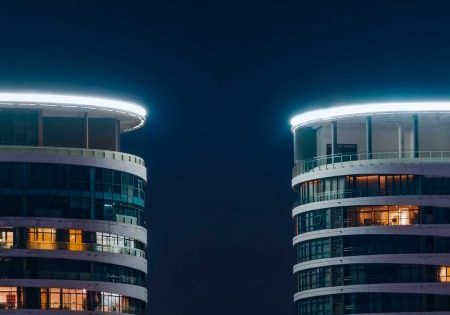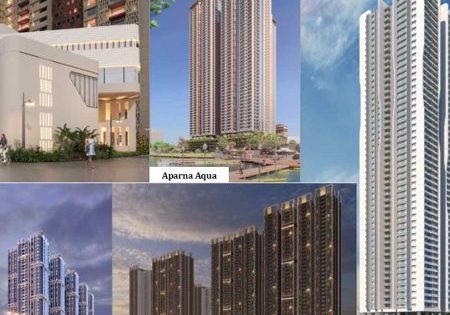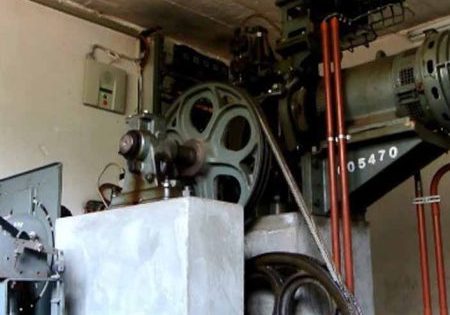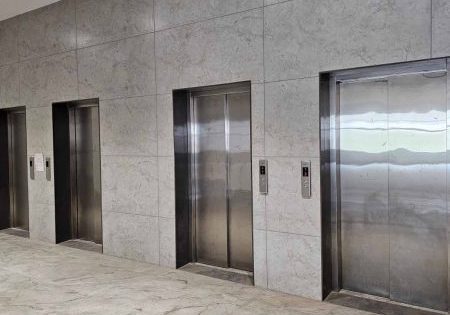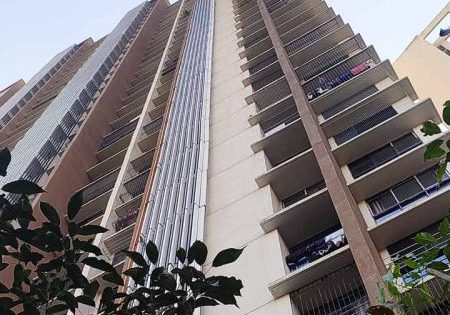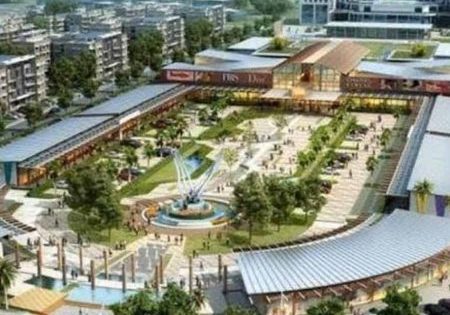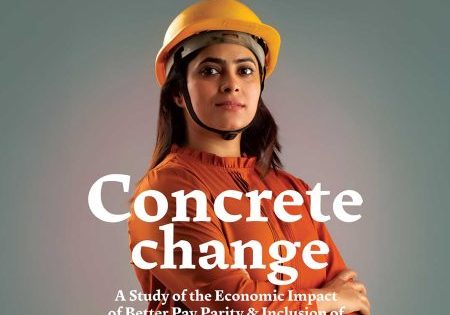New Indian Standard IS 17515 on Energy Performance of Lifts, Escalators & Moving Walks
Jun 4, 2025
A look at the energy efficiency standard
Abstract
The Indian Standards on lifts have been in existence for many years. The current series of Lift Standards, namely IS 17900, was published in 2022, replacing the then-current standards IS 14665, IS 14671 and IS 15785 and other component standards. The Indian Standards on Special lifts, e.g., lifts for Persons with Disabilities, Home lifts, Dumbwaiter lifts etc., were added subsequently. Now, another big revision to the lift standards based on EN ISO 8100-part 1 and EN ISO 8100-part 2 is in the offing. While a lot of new Indian standards were recently published, such as SNEL, EMC Guidelines, Ride Quality, PESSRAL/PESSRAE, Lifts in existing buildings, Wire ropes, Maintenance standards etc., a need was felt to define for energy-efficiency criteria to benefit the lift industry by measurement and classification of lifts, escalators and moving walks by improved energy performance and its conservation.
Introduction
The vertical-transportation (VT) industry in India has been largely regulated by the State Lift Act & Rules. As of now, there are 11 states and one union territory that have enacted their own Lift Act and framed rules thereunder. A few more states are on the verge of releasing new Lift & Escalator Act & Rules soon. In addition, the Bureau of Indian Standards (BIS) has published several Indian Standards on Lifts and Escalators in the last 30 years or so. Typically, Indian Standards are voluntary in nature, unless enacted by state legislations. A few standards are made mandatory for the BIS mark to protect consumers’ health and safety; and a few others are covered under the compulsory registration scheme. However, some states, e.g., Uttar Pradesh, Kerala, Tami Nadu, Karnataka, Jharkhand and Haryana, have incorporated clauses in their respective Lift Act and Lift Rules making compliance to the relevant latest Indian Standards on the Lifts and Escalators compulsory. Lifts and Escalators get regulated through the National Building Code of India as well. New Indian Standards IS 17515-1:2021, IS 17515-2:2021 and IS 17515-3:2021 were released by BIS, and this article will guide users on energy performance of lifts, escalators and moving walks to benefit the lift industry by defining measurement and classification criteria.
Background
This Indian Standard has been prepared in response to the rapidly increasing need to ensure and support the efficient and effective use of energy. The measurement and classification of energy performance of lifts, escalators and moving walks has become an important subject over the past several years. It is now often part of specifications for new and modernized elevator systems. It is also a competitive issue for elevator manufacturing, installation and maintenance companies because it is a strong indicator of the energy-efficient design of VT systems.
How energy efficiency is measured strongly affects the results of those measurements. Based on extensive work that was performed by companies from around the world, new Indian standards, IS 17515:2021 Parts 1, 2 and 3, were released for the measurement of elevator, escalator and moving walk energy performance. The new standards, IS 17515 Parts 1, 2 & 3, are identical with international standards ISO 25745-1:2012 Energy Performance of Lifts, Escalators and Moving Walks Part 1 – Energy Measurement and Verification, ISO 25745-2:2015 Part 2 – Energy Calculation and Classification for Lifts (Elevators) and ISO 25745-3:2015 Part 3 – Energy Calculation and Classification of Escalators and Moving Walks.
Introduction
Along with the development of new lift technologies, specifications for lift, escalator and moving walk installations have become more and more detailed. Since provision of lifts, escalators and moving walks had become an indispensable requirement in buildings, malls, etc., their performance in terms of quality, reliability, comfort and energy efficiency has been receiving increasing attention, and passengers expect better products and features.
At present, a lift or escalator’s performance is usually evaluated based on time taken to perform its function as VT. This includes time required to close the doors (lifts), start, move, stop and open the doors (lifts). It is also associated with quality and reliability, ride comfort, energy efficiency and average breakdown rate.
This Indian standard IS 17515 (Part 1) provides:
a) a consistent method of measuring actual energy usage of an installed lift, escalator and moving walk
b) a simple method to periodically verify that energy usage of an installed unit has not changed — this is in support of regulatory periodic energy verification requirements or audits.
This Indian Standard is intended to be a reference for the following parties:
- building developers or owners determining and confirming the energy consumption of a building.
- building owners and service companies for
- performing regulatory periodic energy verification.
- the manufacturers, installers and maintenance providers of lifts, escalators and moving walks.
- consultants and architects involved in specification of lifts, escalators and moving walks.
The total energy consumption over the entire life cycle of lifts, escalators and moving walks consists of the energy to manufacture, install, operate and the disposal of lifts, escalators and moving walks. However, for the purpose of this Indian Standard, only the power consumption of the lift, escalator or moving walk required for its operation is considered in the assessment of energy consumption and its verification.
Part 1 defines measurement procedures for energy efficiency of lifts, escalators and moving walks in terms of Instrumentation, measuring an instrument’s coupling points, its Accuracy and Test set-ups. Its reporting requirements such as Main energy — running, Main energy — Idle and standby, Ancillary energy — running and Ancillary energy — idle and standby apart from rated load, rated speed, travel, technology, counterweight, etc., plus condition of all active components such as doors, lights, fans, etc., for lifts and step width, rise or travel, nominal speed (running and idle), angle of inclination, etc., for escalators and moving walks, are also defined.
Measurement and Classification of Lift Energy Performance
ISO 25745 (Part 2) applies to passenger and goods passenger lifts with rated speeds greater than 0.15 m/s and only considers the energy performance during the operational portion of the life cycle of the lifts.
This part of IS 17515 does not cover energy aspects, which affect the measurements, calculations and simulations, such as the following:
- hoistway lighting
- heating and cooling equipment in the lift car
- machine room lighting
- machine room heating, ventilation and air conditioning
- non-lift display systems, CCTV security cameras, etc.
- non-lift monitoring systems (e.g., building management systems, etc.)
- effect of lift group dispatching on energy consumption
- environmental conditions
- consumption through the power sockets
- lifts whose travel includes an express zone
The energy values (running energy, idle, 5-min standby and 30-min standby power) used to estimate annual energy consumption can be obtained using the energy measurement methodologies as specified in IS 17515-1 or by calculation or simulation. Energy measurements can be taken during commissioning of a new lift or during the life of an existing lift or on a test facility.
In the case of groups of lift installations, each unit shall be considered as an individual unit. The energy used by a shared component in a group shall be equally distributed between the individual units.
Calculation of Running Energy Per Day
For evaluating this several metrics assumptions and calculations are performed:
- Usage and number of starts per day — The usage of an individual lift shall be categorized according to Table 1 by the estimated number of trips per day.
- Average travel distance — The average travel distance for the target installation shall be selected from Table 2 as percentage of the one-way travel distance of the reference cycle according to IS 17515-1.
- Average running energy per meter — formula defined
- Start/stop energy consumption — formula defined
- Running energy of an average cycle with empty car — formula defined
- Daily running energy — formula defined, and for calculating load factor, the following data (Table 3) is used
Calculation of Non-Running (Idle/Standby) Energy Consumption Per Day
a) Running time per day — formula defined
b) Non-running time per day — formula defined
c) Time ratios of idle/standby modes — The ratios of time spent where the lift is in non-running (idle and standby) modes per day shall be taken from Table 4.
d) Daily non-running (idle/standby) energy consumption — formula defined
Total Energy Consumption Per Day
The estimated daily energy consumption Ed in Wh is given by the formula
Ed = Erd + Enr where
Ed is the total daily energy consumption (Wh)
Erd is the daily running energy consumption (Wh)
Enr is the daily non running (idle/standby) energy consumption (Wh)
Total Energy Consumption Per Year
The estimated annual energy consumption (Wh) is given by the formula
Ey = Ed x dop where
Ey is the annual energy consumption (Wh)
Ed is the total daily energy consumption (Wh)
dop is the number of operating days per year
Lift Energy Efficiency Classification
- Performance level for running — formula defined. The specific running energy for the average running cycle of the target lift is assigned to an energy performance level according to Table 5.
- Performance levels for idle/standby — Energy performance levels for idle, standby and both standby are assigned according to Table 6.
Classification of Energy Performance of the Lift
Energy efficiency class can be obtained using Table 7.
A detailed example of how to calculate Ed has been given in Annexure B of IS 17515-1:2021 as reference.
Measurement and Classification of Escalators and Moving Walks Energy Performance
IS 17515 (Part 3) considers all escalators and inclined moving walks up to a rise of 8 m and horizontal moving walks with a length up to 60 m. This represents about 85% of the worldwide installed units.
This part of ISO 25745 considers the energy performance during the operational portion of the life cycle of escalators and moving walks. It does not cover energy consumption and classification of the ancillary equipment, such as the following:
- lighting with the exception of comb plate lighting, step gap lighting and traffic light of the equipment and are, therefore, not defined as ancillary equipment (comb plate lighting, step gap lighting and traffic light are considered essential for the operation).
- cooling and heating and machine room ventilation
- alarm devices and emergency battery supplies equipment, etc.
- environmental conditions
- consumption through the power sockets
There can be other electrical loads not associated with the escalator or moving walk, which shall not be included.
Estimation of Energy Consumption
Measured or calculated power consumption is used for determining energy consumption. Energy consumption is power consumption multiplied within a defined time period.
Calculation methods to estimate energy consumption of escalators and moving walks are given in Annex A of IS 17515-3. Formulas are provided for a situation where a more complete or appropriate method is not available. Energy consumption estimated by the formulae is based on average factors. Energy calculations using these methods are only estimations and can differ from real energy consumption, which is mainly affected by traffic topology, technology and load factors. There can be a deviation between a calculated value and a measured value in a specific installation. This can be due to assumptions made. Where the difference is greater than 20%, an investigation should be carried out.
Two methods for estimation of energy consumption are provided:
- calculation method based on default values for planning purposes.
- calculation method based on power measurement.
Energy Performance Classification
a) Classification of the reference power consumption — To obtain the reference power consumption, the calculation shall be executed with the reference values according to Table 8.
b) Calculation or measurement of the power consumption of the specified unit — description and calculation guidelines provided
c) Calculation of the energy performance ratio — description and calculation guidelines provided
d) Calculation of the reference operation mode performance ratio — For the calculation of the reference operation mode performance ratio, a reference usage profile according to Table 9. The operation mode performance ratio varies in dependence of the usage profile, and it does NOT affect the energy performance ratio. For the classification of the operation mode performance ratio, only the reference in below table is used.
Energy Performance Classification
a) Energy performance class indicator — This classification indicator describes the impact of both the efficiency of active parts and the friction of passive escalator/moving walk components or systems. The classification indicator is in the range of A+++ to E where A+++ is the best performance.
The classification is obtained by applying
b) Operation mode indicator — Each mode capability is indicated by a logo. This classification indicator (logo) describes the capability of the unit to operate in one or more of the following operation modes.
c) Ancillary energy performance indicator — No indicator for the escalator/moving walk is defined. Measurement of power consumption of any ancillary equipment is not considered for the energy classification.
A detailed example of how to calculate Ed has been given in Annexure B of IS 17515-3:2021 as reference.
Conclusion
IS 17515:2021 establishes the requirements, methodology and processing techniques that are required to standardize the measurement and reporting of energy efficiency of lifts, escalators and moving walks. This standard does not try to establish what is, or what is not, acceptable CLASS in terms of energy efficiency. Practically, acceptability must be considered as dynamic. The technology and techniques to provide “efficient” product will change (mostly improve) over time.
Disclaimer: The above article is written in good faith to educate and make people aware of the newly published Indian Standards on lifts. The examples described here are of the nature of bird’s eye view and do not contain all the information/conditions in depth for which users are advised to refer to the original text.
All figures and tables are taken from IS 17515:2021 published by BIS.
Further, the views expressed are personal to the author. The author/publisher or the organization where the author may be employed shall not be held responsible for any action taken by anybody based on the information contained in the article.
Get more of Elevator World. Sign up for our free e-newsletter.



